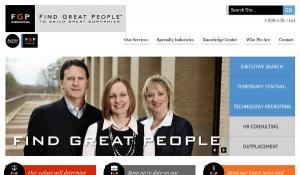The Death of Print Media?
3 Ways to Revive your Print Collateral Online
In the 1984 movie "Ghostbusters", Harold Ramis as Egon stated to the Annie Potts character quite simply that "Print is dead," in regards to if he reads a lot of books.
27 years removed from the exploits of Peter Venkman, the Stay Puft Marshmallow Man and Egon's declaration, print has since diversified into the digital world and has proven to be very far from being dead. But if you're a company that's used to only print media, the avenues into digital publishing might prove to be difficult if not downright off-putting. In fact, 2011 saw the release of the Apple and Fox backed The Daily which marked the first time that a publication had ever debuted directly to digital, bypassing being printed first. The time to move to digital publishing might very well be right now.
Good news. There are plenty of avenues into digital publishing and some are just a few extra steps not too far removed from your existing print workflow. But you need to first identify what your target audience will be using to read your digital published media. For instance, most smartphones have the ability to read, open and even annotate the tried and tested Adobe PDF file format. So up first is the veritable PDF file. Going from Microsoft Word or Adobe InDesign into a full- fledged PDF file is quite easy. And if you're looking to share documents with a team, look no further than Acrobat.com where you can get a free account with just a name and e-mail address, or $14.99 a month for basic team collaboration.
The only negative about PDF files is that when they're read via the browser, the (sometimes) cumbersome plug-ins from Adobe or from Foxit Software, amongst other PDF capable plugins can slightly deter readership since it becomes yet another plug-in or the file has to be download to facilitate being read. And if you (the publisher) wish to track usage or readership, your site will have to be set up to track your downloads, sort out what's a repeat download or a unique download and archive past issues. That can get somewhat bothersome. So what else is there?
The movement towards Adobe Flash based "flipbooks" was at one time considered trendy and cool; however that move disallows web perusal and consumption by any of the 160+ million sold Apple devices. That's a big chunk of readers that cannot view your content, so for that audience, the PDF still remains an option (I personally use Readdle for all of my PDF's on my Apple iPad) but there's also the recently released Adobe Digital Publishing Suite.
Via a simple process going from Adobe InDesign to their newer file format, your *.issue files can either be uploaded to the Adobe distributed channels or to your server to be consumed by the Adobe branded Content Viewer - free in the Apple iTunes Music Store. Within Apple iTunes, you simply drag and drop the downloaded *.issue files into the Adobe Content Viewer application. But what if you want to publish to a list of subscribers, removing the likelihood that somebody may forget or miss that you have a new issue out? Well, for a monthly fee to Adobe plus a fee based on your readership amounts (the more readers, the lesser per issue) you can now push out updates to all subscribers and say that you have a fully distributed digital magazine. Adobe currently has free content readers for Apple iOS based tablets with the Android tablets and the Blackberry PlayBook content viewers both debuting very soon.
However, an immediate problem with the Adobe Digital Publishing Suite/Adobe Content Viewer method is that your content isn't exactly branded by an application that carries your logo, slogan or name. Much like people use Nook or Kindle software on their iPhones, iPads or Android devices to read a multitude of other branded magazines and books, sometimes going that extra step to have your content and application icon match your companies branding can make all the difference in visibility and readership.
The next (and biggest) step is to create an iOS and/or Android application.
Note that going from PDF to Adobe Digital Publishing Suite to a branded application that allows for subscriptions and digital distribution also means a significant cost increase. Applications like the Martha Stewart app or the Popular Science app are serialized, subscriber friendly, branded applications with monthly production cycles, static or animated advertisements that make the entire process a much more engaging experience that shows off the capabilities and earning ability of digital publishing.
PDF, Adobe Digital Publishing Suite and custom application development are just the tip of the iceberg and represent only a few of the plethora of ways to go from print to digital publishing. But it all boils down to knowing who your readers are, what device(s) they will use most to consume your content and how much of a budget and manpower you're willing to put into getting your content in front of the eyes of your readers.
Bottom Line: Is print dead? Far from it. It just has learned some new tricks.
Popular Posts
- Dashboards: Cool tools or sensory overload?
- Web Design Trends for 2012
- Dashboards: Cool Tools or Sensory Overload
- The Death of Print Media?
- Introducing Buffalo Battles, Merge’s own FedEx days / 20 Percent Time
- Higher Education Search Marketing
- There's More to Facebook Than Timeline
- Let Your Fans Choose
- Mobile Trends for 2012
- You Only Have One Shot at Making a Web Impression

Comments
Its sad but its true...there
Its sad but its true...there is a documentary coming out called Page One that addresses this by documenting what is happening at The New York Times! http://bit.ly/jGIJW8
Post new comment